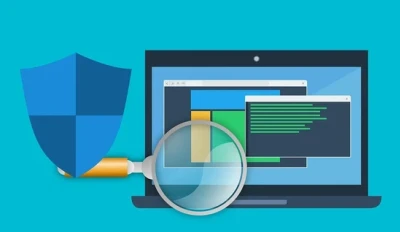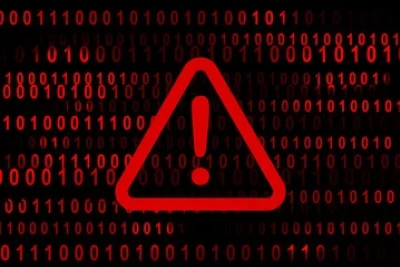
Computer systems, software, and applications need robust protection from network security threats. This protection includes locating and remediating weak points to avoid being targeted by malicious actors. Regular assessment with practical vulnerability analysis tools in Kali Linux is indispensable for its robust security.
Today, we'll review some of the best-known Kali Linux-specific vulnerability analysis tools and give some fundamental tips about choosing among them.
Understanding the Basics of Vulnerability in Kali Linux
Kali Linux is used to deploy tools that research, identify, classify, prioritize, and mitigate software, systems, and network weaknesses. This is a proactive means for an organization to find security gaps that an attacker might otherwise use. Understanding these tools is paramount in building a secure environment.
is used to deploy tools that research, identify, classify, prioritize, and mitigate software, systems, and network weaknesses. This is a proactive means for an organization to find security gaps that an attacker might otherwise use. Understanding these tools is paramount in building a secure environment.
Vulnerability assessments are crucial. IBM estimates that 60% of small businesses fold within six months following a cyberattack. Routine vulnerability assessments can keep this from happening to a large extent since these assessments might detect potential security gaps.
According to IBM, the average data breach cost in 2021 was $4.24 million. Identifying a vulnerability early enough can reduce potential losses to a minimal level; thus, this type of assessment is considered a best practice and a necessary strategy in organizations. Many industries also face regulatory frameworks that demand regular compliance assessments to avoid penalties.
Understanding Open-Source Vulnerability Assessment Tools
Free vulnerability assessment tools show a way out by identifying critical security risks within networks and systems. Indeed, most are versatile, free tools, making them very popular among businesses and individuals. Using open-source tools means an organization can take steps to nullify a vulnerability before it can be exploited, leading to an enhanced security posture.
There are four kinds of scanners, each meant to serve another purpose in finding and mitigating security risks. Data-based vulnerability scanners scan through databases in search of their weaknesses. They find missing patches, weak passwords, and misconfigurations; they provide real-time data insights that allow organizations to fix issues immediately. In this age of sensitive information protection, such scanners play an imperative role in securing data against breaches.
The tool remains crucial in wired and wireless network monitoring for establishing weaknesses within the network. Generally, the tool performs analyses of network traffic and configuration to help protect the network infrastructure from various threats. Since modern networks are always connected, these tools are essential in establishing possible vulnerabilities that may lead to security breaches.
The host-based vulnerability scanners are installed on individual hosts in a system and offer a closer look at the potential landscape of security issues. Pairing robust vulnerability analysis tools with the best web hosting solutions ensures a secure website foundation, reducing potential risks from external threats and enhancing overall system reliability. This tool can identify most vulnerabilities emanating from internal hosts or external directions, ensuring comprehensive security for the individual hosts. Some vulnerabilities occur even with integrated security measures within web hosting services, so such scanners are called for.
A cloud-based vulnerability scanner is necessary in this highly cloud-service-dependent era, with most staff working from home. Many tools emphasize scanning and detecting security issues within cloud environments, such as websites and other online assets. They ensure that cloud infrastructures are secured against evolving threats to protect critical business operations.
Choice of Vulnerability Analysis Tools in Kali Linux
 When choosing vulnerability analysis tools to run within Kali Linux, several factors are considered: compatibility, effectiveness, and suitability. The first factor is to check the tool's compatibility. Not every tool created for vulnerability analysis will work perfectly in Kali Linux because Kali Linux is a specially developed distribution for security analysts.
When choosing vulnerability analysis tools to run within Kali Linux, several factors are considered: compatibility, effectiveness, and suitability. The first factor is to check the tool's compatibility. Not every tool created for vulnerability analysis will work perfectly in Kali Linux because Kali Linux is a specially developed distribution for security analysts.
Ensuring that chosen tools are compatible with Kali Linux will prevent hobbyists or professionals from issues in depth that may hinder the performance of a security audit.
Another critical point is the tool's feature analysis. The feature set differs for various tools, and when reviewed, those exact tools can be pinpointed as being positioned to satisfy selected organizational needs. For example, if comprehensive network scanning would be necessary, one needs to focus on those tools with advanced features for network-based scanning.
Second, the tool's usability is crucial. While valuable advanced features remain important, tools must also provide intuitive interfaces and make navigating them easier for users who are not necessarily experts in vulnerability assessment.
Community support and documentation also go a long way in making practical open-source tools. Excellent community support, active forums, and good documentation could become invaluable resources in troubleshooting and maximizing their effectiveness. Organizations will ensure the robustness of the support network for the tools under consideration to help users overcome challenges.
The Need For Constant Updates
 Cybersecurity requires constant updates due to even the most minor vulnerabilities and threats. By choosing tools with frequent updates, they can deliver their capabilities of detection and diminishment regarding the latest security threats. Adaptability is a critical issue for strategies to keep the security posture proactive.
Cybersecurity requires constant updates due to even the most minor vulnerabilities and threats. By choosing tools with frequent updates, they can deliver their capabilities of detection and diminishment regarding the latest security threats. Adaptability is a critical issue for strategies to keep the security posture proactive.
It is highly recommended that performance and effectiveness tests be performed before fully committing to a vulnerability analysis tool. Most open-source tools have trial versions or community editions that can be downloaded for evaluation. This will give the organization an idea of how well the tool will meet its needs and fit into the current systems.
Practical vulnerability analysis tools should finally provide detailed and actionable reports. Thus, the ability of each tool to report in review regarding the identified vulnerabilities and suggested steps for remediation should be evaluated for clarity. Comprehensive reports allow insight and effective remedies for security issues, allowing organizations to take appropriate action based on the findings.
Our Final Thoughts on the Importance of Vulnerability Analysis Tools
Properly selecting the right vulnerability analysis tools in Kali Linux forms the bedrock upon which sound network and system security can be maintained. Further, this efficiency in the identification and mitigation of such potential security threats would depend on gaining a reasonable understanding of the various types of vulnerability scanners and key factors related to compatibility, features, and support. In addition, the active, regular use of these tools will enhance the capability to secure systems and critical data against emerging threats, offering a secure and resilient IT environment.


















